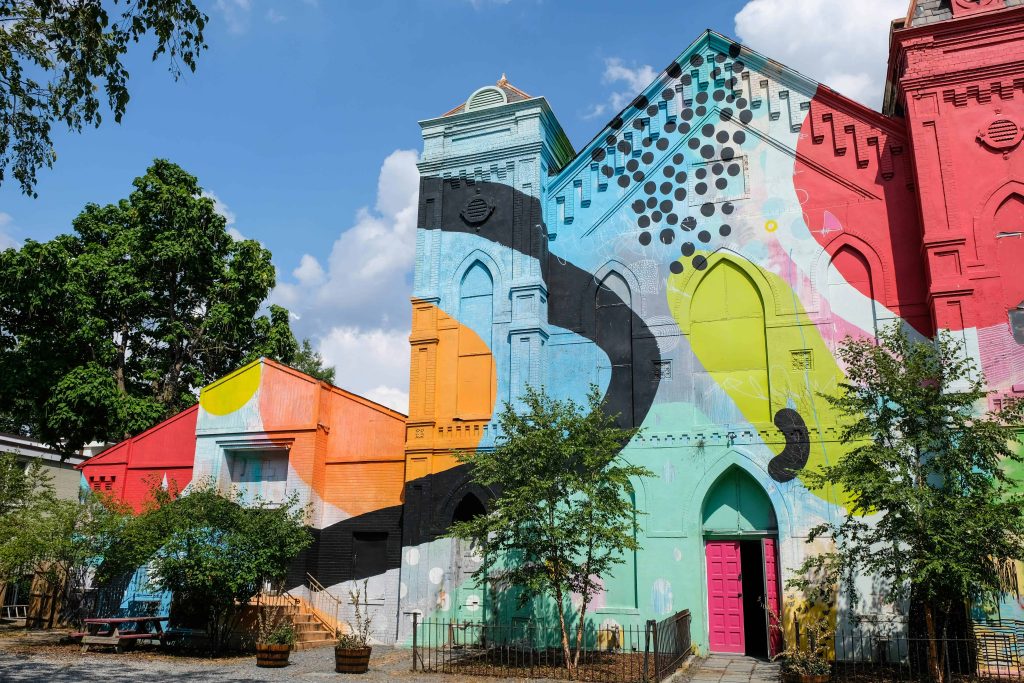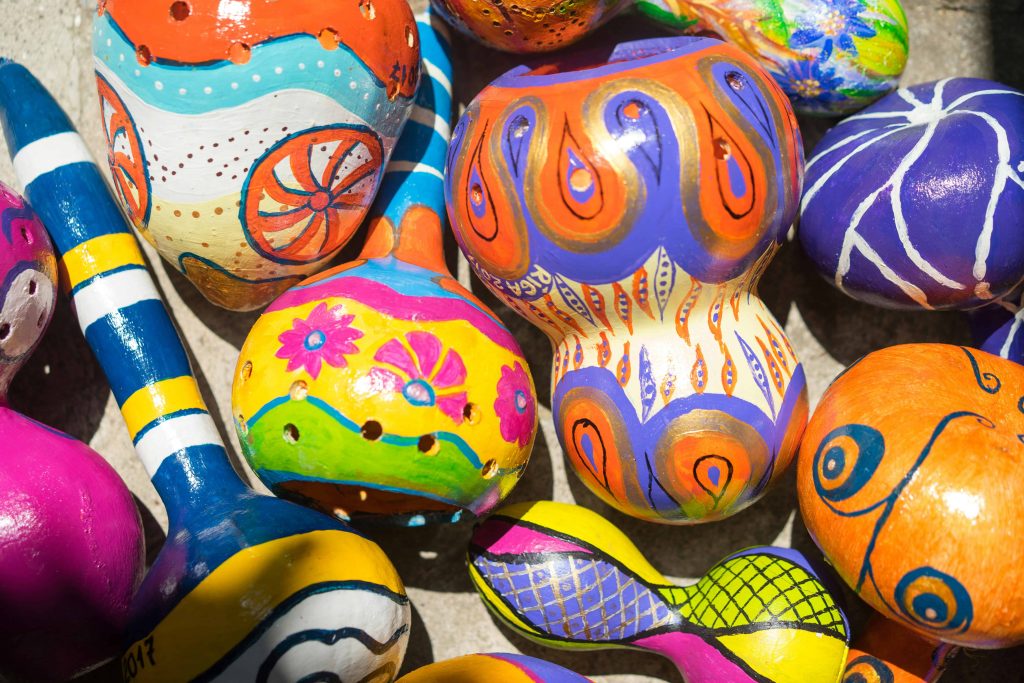
16 Oct Cultural Sensitivity in Artistic Exchange
Breaking Barriers: Promoting Cultural Sensitivity in the Art World
Artistic exchange, the collaborative and interactive sharing of artistic practices, ideas, and works across cultural boundaries, has gained significant importance in our increasingly globalized world. This exchange allows artists to draw inspiration from diverse cultural landscapes, enrich their practices, and reach broader audiences. However, engaging in artistic exchange requires a deep understanding of cultural sensitivity. Cultural sensitivity, or awareness and respect for cultural differences, is essential to ensuring that artistic exchanges are respectful, ethical, and enriching for all parties involved.

Importance of Cultural Sensitivity in Artistic Exchange
Fosters Deeper Understanding and Appreciation of Diverse Artistic Expressions
Cultural sensitivity allows artists and audiences to appreciate the richness and diversity of artistic expressions from different cultures. By approaching art with an open mind and respect for its cultural context, one can gain a deeper understanding of the historical and social factors that shape artistic traditions.
Breaks Down Cultural Barriers and Promotes Dialogue Between Artists and Audiences
Artistic exchange, when approached with cultural sensitivity, can serve as a bridge between cultures. It breaks down cultural barriers and fosters dialogue, allowing artists and audiences to engage in meaningful conversations about their experiences and perspectives. This exchange of ideas promotes mutual understanding and respect.
Creates a Space for Collaboration and Innovation Through the Exchange of Ideas
Cultural sensitivity in artistic exchange encourages collaboration and innovation. By respecting and valuing diverse artistic traditions, artists can combine different techniques, styles, and concepts to create new and innovative works. This fusion of ideas can lead to groundbreaking artistic developments that push the boundaries of creativity.
Avoids Cultural Appropriation and Misrepresentation
Cultural appropriation, the adoption of elements of one culture by members of another culture without permission or understanding, can be harmful and disrespectful. Cultural sensitivity helps avoid appropriation and misrepresentation by ensuring that artists engage with other cultures in an informed and respectful manner. This includes seeking permission, giving credit, and understanding the cultural significance of the borrowed elements.

Guiding Principles for Cultural Sensitivity
Self-Awareness
- Recognizing Your Own Cultural Biases (Ethnocentrism)
- Understanding one’s own cultural biases is the first step toward cultural sensitivity. Ethnocentrism, the belief that one’s own culture is superior to others, can hinder meaningful artistic exchange. Artists should strive to recognize and overcome these biases.
- Examining Your Assumptions About Other Cultures
- Artists should critically examine their assumptions about other cultures. This involves questioning stereotypes and preconceived notions and being open to learning from the cultural context of the art they engage with.
Research and Context
- Understanding the Historical and Cultural Background of the Art Form
- Thorough research into the historical and cultural background of an art form is crucial for cultural sensitivity. This knowledge helps artists appreciate the significance of the art and avoid unintentional disrespect.
- Respecting the Symbolism and Meaning Behind Artistic Expressions
- Artistic expressions often carry deep symbolic meanings that are rooted in cultural traditions. Respecting these meanings is essential to honoring the culture from which the art originates.
Collaboration and Respect
- Seeking Permission and Guidance from Artists and Cultural Experts
- When engaging with art from different cultures, it is important to seek permission and guidance from the original artists or cultural experts. This shows respect and ensures that the art is engaged with appropriately.
- Engaging in Open and Respectful Dialogue
- Open and respectful dialogue is key to cultural sensitivity. Artists should communicate with their collaborators and audiences in a manner that values their perspectives and contributions.
- Acknowledging and Celebrating the Unique Contributions of Different Cultures
- Acknowledging and celebrating the unique contributions of different cultures enriches artistic exchange. It highlights the diversity and richness of artistic traditions and fosters a more inclusive and respectful artistic community.

Challenges and Considerations
Language Barriers and the Importance of Clear Communication
Language barriers can pose significant challenges to artistic exchange. Clear and effective communication is essential to overcoming these barriers and ensuring mutual understanding.
Navigating Sensitive Cultural Topics and Respecting Traditions
Artists must navigate sensitive cultural topics with care and respect. Understanding and honoring cultural traditions and practices is crucial to avoiding offense and fostering respectful exchanges.
Finding a Balance Between Appreciation and Appropriation
Striking a balance between cultural appreciation and appropriation is a major consideration in artistic exchange. Artists must be mindful of the line between respectfully incorporating elements from another culture and exploiting those elements for personal gain.

Conclusion
Cultural sensitivity is paramount in artistic exchange. It fosters deeper understanding, breaks down cultural barriers, promotes dialogue, and encourages collaboration and innovation. By adhering to guiding principles such as self-awareness, research, and respectful collaboration, artists can engage in meaningful and ethical artistic exchanges. Ultimately, fostering a more inclusive and respectful artistic dialogue benefits artists, audiences, and the broader cultural landscape.
Key Takeaways
- Essential Role of Cultural Sensitivity
- Cultural sensitivity is crucial in artistic exchange, enabling respectful and ethical interactions between diverse cultures.
- Fostering Understanding and Appreciation
- Emphasizing cultural sensitivity helps artists and audiences appreciate and understand the rich diversity of artistic expressions and the historical and social contexts that shape them.
- Promoting Dialogue and Breaking Barriers
- Artistic exchange, when approached with cultural sensitivity, serves as a bridge between cultures, fostering meaningful dialogue and mutual respect.
- Encouraging Collaboration and Innovation
- Respect for diverse artistic traditions promotes collaboration and innovation, leading to groundbreaking and creative artistic developments.
- Avoiding Cultural Appropriation
- Cultural sensitivity helps prevent cultural appropriation and misrepresentation by ensuring respectful and informed engagement with different cultures.
- Guiding Principles for Cultural Sensitivity
- Self-Awareness: Recognize and overcome personal cultural biases and assumptions.
- Research and Context: Understand the historical and cultural background of art forms and respect their symbolism and meaning.
- Collaboration and Respect: Seek permission and guidance from cultural experts, engage in respectful dialogue, and celebrate cultural contributions.
- Challenges and Considerations
- Language Barriers: Effective communication is essential to overcome language challenges.
- Navigating Sensitive Topics: Artists must carefully navigate cultural sensitivities and traditions.
- Balancing Appreciation and Appropriation: Artists must differentiate between respectful cultural appreciation and exploitation.
- Conclusion
- Adhering to cultural sensitivity principles enriches artistic exchange, promoting inclusivity, respect, and mutual understanding in the global artistic community.
FAQs
What is cultural sensitivity in artistic exchange?
Cultural sensitivity in artistic exchange refers to the awareness and respect for cultural differences when artists engage with art from diverse cultural backgrounds. It involves understanding the historical and social contexts of art forms, respecting their symbolic meanings, and avoiding cultural appropriation by engaging ethically and respectfully.
How does cultural sensitivity benefit artistic exchange?
Cultural sensitivity fosters a deeper understanding and appreciation of diverse artistic expressions, promotes dialogue between artists and audiences across cultures, and encourages collaboration and innovation. By respecting cultural differences and engaging in respectful dialogue, artists can create meaningful exchanges that enrich artistic practices and perspectives.
What are the challenges to maintaining cultural sensitivity in artistic exchange?
Challenges include navigating language barriers to ensure clear communication, respecting sensitive cultural topics and traditions, and finding a balance between cultural appreciation and appropriation. Artists must strive to engage with other cultures respectfully, seek guidance when necessary, and uphold ethical standards to avoid unintentional disrespect or harm.
Experience the enduring impact of public art through a curated selection of projects that have left an indelible mark on communities worldwide, shaping collective identities and fostering a sense of belonging.

